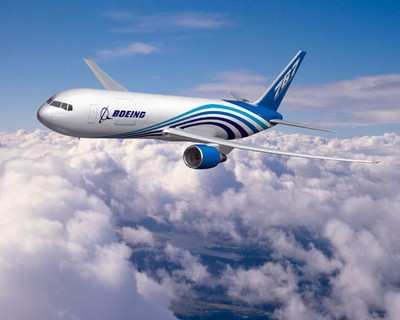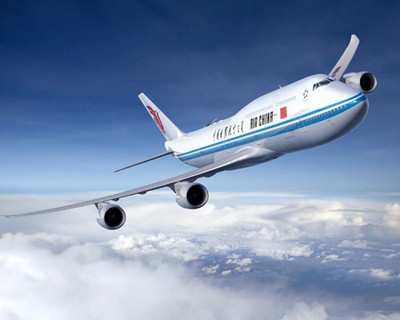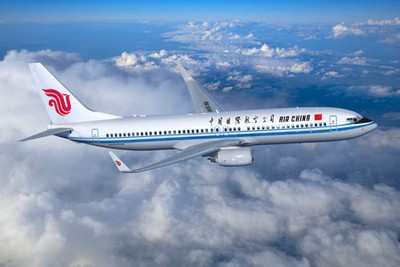Boeing's Tinseth: Growth, Fuel Prices, Aging Fleets Key Factors
Affecting Asian Airlines’ Airplane Decisions
 In a media briefing Monday at Asian
Aerospace 2011, Randy Tinseth, vice president of Marketing for
Boeing Commercial Airplanes, said that the Asia Pacific
region’s air traffic growth will exceed the world average by
a large margin over the next two decades. The region’s air
traffic growth is expected to grow at an average annual rate of 6.8
percent over the next 20 years, compared to the world average of
5.3 percent.
In a media briefing Monday at Asian
Aerospace 2011, Randy Tinseth, vice president of Marketing for
Boeing Commercial Airplanes, said that the Asia Pacific
region’s air traffic growth will exceed the world average by
a large margin over the next two decades. The region’s air
traffic growth is expected to grow at an average annual rate of 6.8
percent over the next 20 years, compared to the world average of
5.3 percent.
“Asia Pacific will account for one-third (10,320) of new
airplane deliveries worldwide over the period,” Tinseth said.
“This demand is driven by the fact that Asia Pacific will
account for 44 percent of travel in 20 years’ time, up from
around 34 percent today. China’s air travel growth is even
more dramatic, with an 8.6 percent increase over the next two
decades. This is sweet music to an airplane manufacturer’s
ears.”

The rosy outlook is not limited to growth in passenger service.
World air cargo traffic will triple over the next 20 years,
according to Jim Edgar, regional director of Cargo Marketing for
Boeing. “From now through 2029, we expect world air cargo
traffic to grow at an annual rate of 5.9 percent,” Edgar
said. “Asia will continue to be at the forefront of the air
cargo industry. Routes associated with Asia will continue to
experience the world’s highest growth rates over the next 20
years, at 6.8 percent.”
Of local interest and in line with the cargo recovery, Hong Kong
Air Cargo Terminals Limited announced that total annual tonnage for
2010 hit a new handling record of 2.9 million metric tons, an
increase of 24.8 percent over 2009. “China represents 40
percent of the trans-Pacific cargo market, and Hong Kong is a key
gateway for air cargo connecting China with the world,” Edgar
said. “This area stands to benefit greatly from future
increases in air cargo traffic.”

Tinseth said that rising passenger and cargo traffic is creating
pressure for fleet growth. Globally, airlines will need 30,900 new
passenger and freighter airplanes through 2030, valued at US $3.6
trillion. 44 percent of these aircraft will replace older,
less-efficient airplanes, while 56 percent will account for new
aircraft needed to meet air traffic growth. The world fleet is
projected to double from 18,890 to 36,300 airplanes total airplanes
during this span.
“The near doubling of the world fleet size is an indicator
that airlines not only will plan for growth, but will take the
economically rational step of modernizing their fleets as a hedge
against high and unpredictable oil prices,” Tinseth said.
“The global economic recovery is helping airlines rebuild
their balance sheets, leading toward a demand for newer, fuel
efficient and environmentally progressive airplanes
worldwide.”

Tinseth said that the biggest demand in the fastest growing
markets will be for single-aisle airplanes. “This demand is
driven by three factors: growth in developing and emerging markets,
demand from low-cost carriers, and the need to replace an aging
fleet,” he said.
The single-aisle, Boeing 737 is the most widely flown jetliner
in the world. To keep up with demand, Boeing recently boosted
production to a record 31.5 737s per month. Despite the 737’s
popularity, Tinseth said Boeing is asking itself, “What comes
next?”
“We’re spending a lot of time with our customers to
understand their needs and preferences for an airplane that will
serve the single-aisle market for the next 50 years.”

While the company hasn’t made a decision on whether it
will put a new engine on the 737 or instead develop a successor to
the popular plane, Tinseth said customers would like to know what
could be done with a new airplane in terms of size, fuel efficiency
and reduced carbon footprint and maintenance costs. “So
that’s where our focus is right now.”
Tinseth said if Boeing decides to build a new airplane, it
likely would enter into service near the end of the decade.
“We are taking our time making this decision, analyzing all
the technological data as well as what customers want,”
Tinseth said. “We could make an announcement as early this
summer.”
 Airborne 07.02.25: TikToker Arrested, Vietnam A/L Ground Hit, ATC Modernization
Airborne 07.02.25: TikToker Arrested, Vietnam A/L Ground Hit, ATC Modernization Airborne Affordable Flyers 07.03.25: Sonex HW, BlackShape Gabriel, PRA Fly-In 25
Airborne Affordable Flyers 07.03.25: Sonex HW, BlackShape Gabriel, PRA Fly-In 25 ANN's Daily Aero-Term (07.07.25): Discrete Code
ANN's Daily Aero-Term (07.07.25): Discrete Code Classic Aero-TV: DeltaHawk Aero Engine Defies Convention
Classic Aero-TV: DeltaHawk Aero Engine Defies Convention ANN's Daily Aero-Linx (07.07.25)
ANN's Daily Aero-Linx (07.07.25)







